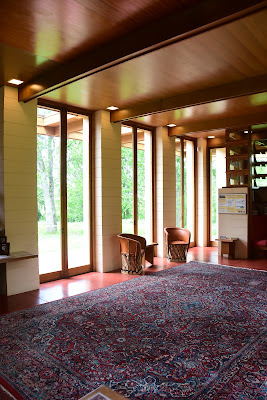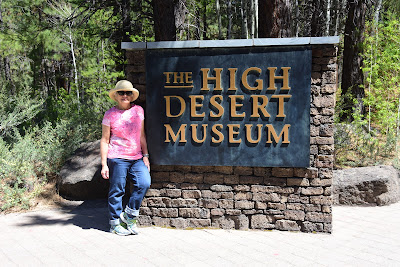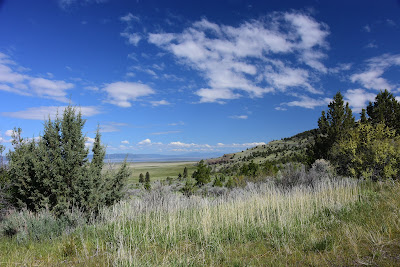Three roads lead into Rainier Park, two of which we considered yesterday, but both were snowed in and closed. There is another entrance on the west side, but I think it was also closed. Even so, when we reached the turnoff that ran toward the western entrance we turned north onto Route 7 and made the 17 mile run up to the tiny town of Elbe, where the Mount Rainier Railroad is headquartered. The railroad enters Rainier Park from the west side. Of course, we didn't know it at the time, we were just looking for a nice place to have lunch.
Turned out that Elbe was not only a nice place to have lunch (the local post office afforded us a spot in their parking lot), but there were some darn interesting things to see and photograph there as well. Not only did we discover that the Mount Rainier Railroad called Elba home, but there was quite a bit of old equipment for the rail fan to photograph.So, while Concetta worked on getting lunch on the table, I grabbed the camera and went out to reconnoiter a bit since at that precise moment the sun had poked its face through the all-too-frequent cloud cover, and I could see some wonderful shots even from across the street. Since all day the sunlight had been an on again/off again affair, I thought I should grab whatever shots I could. Later, after lunch was eaten and cleaned up, the two of us wandered the Rainier Railroad grounds at a more leisurely pace.
The first thing Concetta and I did, was walk over to the depot so that I could purchase whatever literature was available so I could tell you a little bit about the history of the line. Unfortunately, there was none to be had, though the two women behind the sales counter were cheerful and helpful and gave us the web address that might give us some information. Unfortunately, I didn't find any history on the website, just information about scheduling a ride on the train.Since the locomotive sitting next to the depot looks like a Heisler to me, the rail line was almost certainly part of a lumbering operation. Heislers and similar "geared" locomotives were predominantly used in timber country where grades were steep, curves were sharp, and normal steam locomotives would have been unworkable. I found the following on Heislers in Wikipedia:
"The Heisler locomotive was the last variant of the three (Shay, Climax, and Heisler) major types of geared steam locomotives. Charles L. Heisler received a patent for the design in 1892, following the construction of a prototype in 1891. Somewhat similar to a Climax locomotive, Heisler's design featured two cylinders canted inwards at a 45-degree angle to form a 'V-twin' arrangement. Power then went to a longitudinal drive shaft in the center of the frame that drove the outboard axle on each powered truck through beveled gears in an enclosed gear case riding on the axle between the truck frames. The inboard axle on each truck was then driven from the outboard one by external side (connecting) rods.""In 1897, Heisler received a patent on a three-truck locomotive. As with Class C Shay locomotives, the tender rode on the third truck. Unlike the Shay, Heisler's design did not have a continuous string of line shafting running the length of the engine. Instead, the tender truck was driven by a line shaft above the shaft driving the main engine trucks, connected to it through spur gears. This patent also covered use of a 4-cylinder 'V-four' cylinder configuration."
"The Heisler was the fastest of the geared steam locomotive designs, and yet was still claimed by its manufacturer to have the same low-speed hauling ability."So, undoubtedly the Heisler on display, and perhaps a whole stable of other geared locomotives now vanished to scrap yards, would regularly venture far into the stands of old-growth timber, pitching and twisting over uneven track, screeching around tight turns, and traversing roaring mountain rivers atop spindly wooden trestles to bring out long trains of trellis-style log cars piled high with nature's bounty in valuable wood. It happened all over the west, and it probably happened in the hills around Elba as well. Usually, whole swaths of forest were completely denuded without regard to stream degradation, erosion runoff, or destruction of the animal population.
Nowadays, clear-cutting is usually verboten, and logging companies use instead a sort of checkerboard strategy for cutting isolated tracts, while leaving the surrounding forest intact. Later, when the trees have grown up once again in the logged over portion, a different nearby tract is then logged. That way, the environmental impacts are not as great, as there is always a contiguous portion of the forest that remains whole to control runoff, and where animals can remain hidden from predators.The rail yard in Elba is filled with old, largely worn-out rail equipment from bygone days. But in a few cases. the railroad cars, none of which were ever used in the logging industry, have been converted to restaurants and logging for Mount Rainier-bound adventurers. I especially liked the pizza shop, which featured an outdoor cafe sort of eating area. There was also a bar called the "Side Track Room," where somewhere on a wall was posted a small sign that advised patrons to just call the wife when he stopped by the bar coming home from work, and tell her he'd been sidetracked. Might work I guess.
Aside from the long line of decent-looking cabooses being used as part of a B&B endeavor, the remainder of the equipment was sadly neglected and desperately in need of some adaptive reuse. At one point we came upon some boxcars and bunkhouse cars from some long vanished work train which looked like they'd probably never move again. However, interestingly, at the very end of the work train was a trio of what are known to rail enthusiasts as "heavyweight passenger cars." The heavyweight steal passenger cars are what Americans were traveling in around the time of World War II. Though the faded names on the sides of the cars proclaimed them to be part of the Mount Rainier Railroad fleet of dining and club cars, in all probability these three cars were enjoying their heyday in 1941, and no doubt hauled tens of thousands of soldiers and sailors off to five years of war.




































